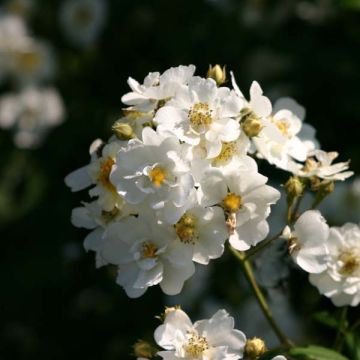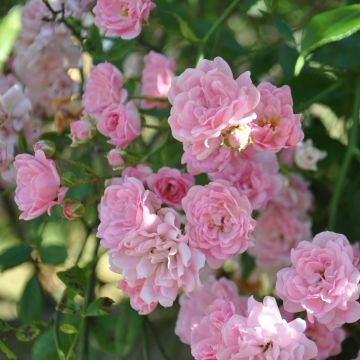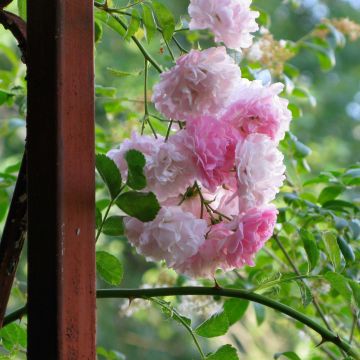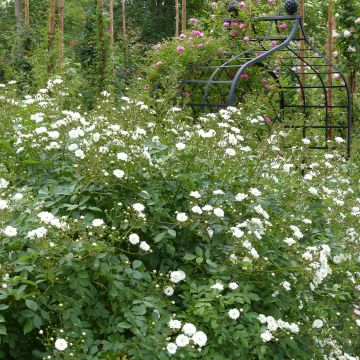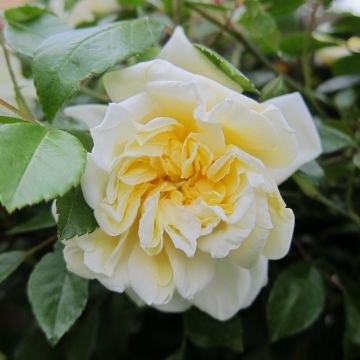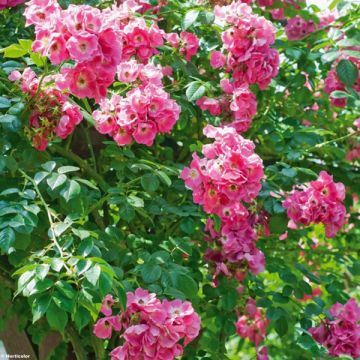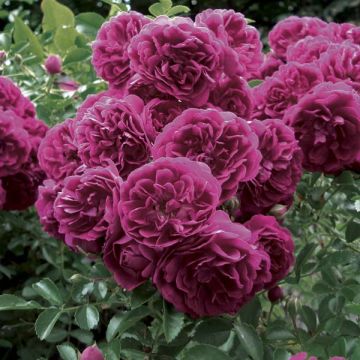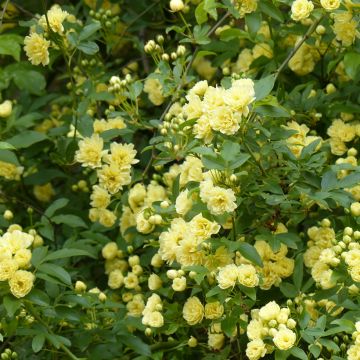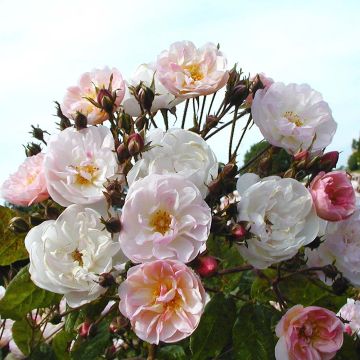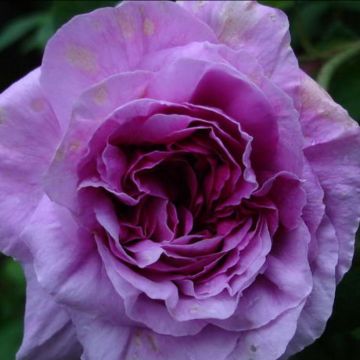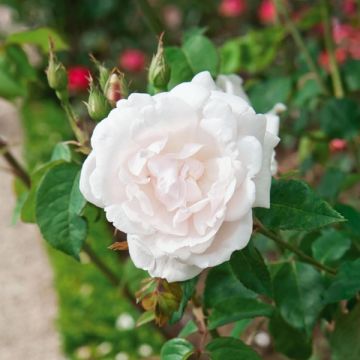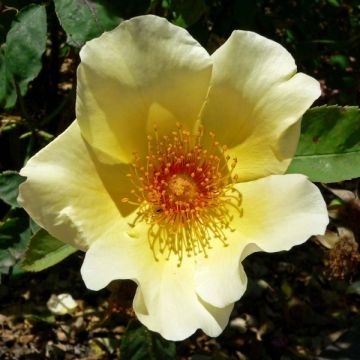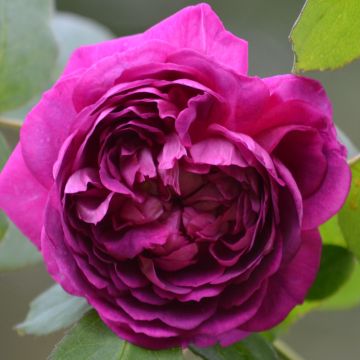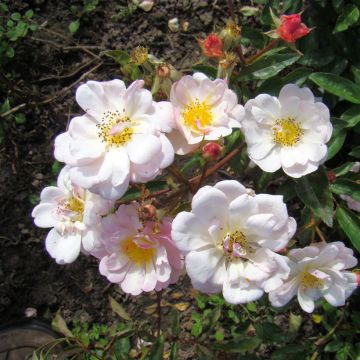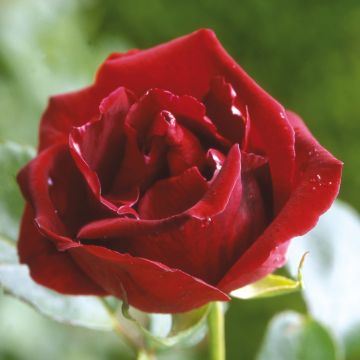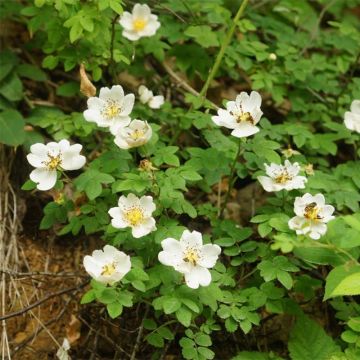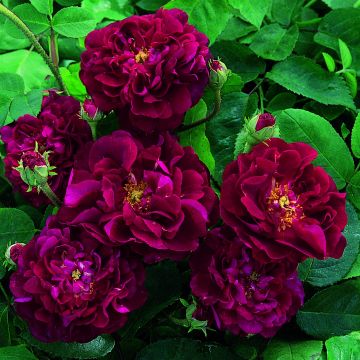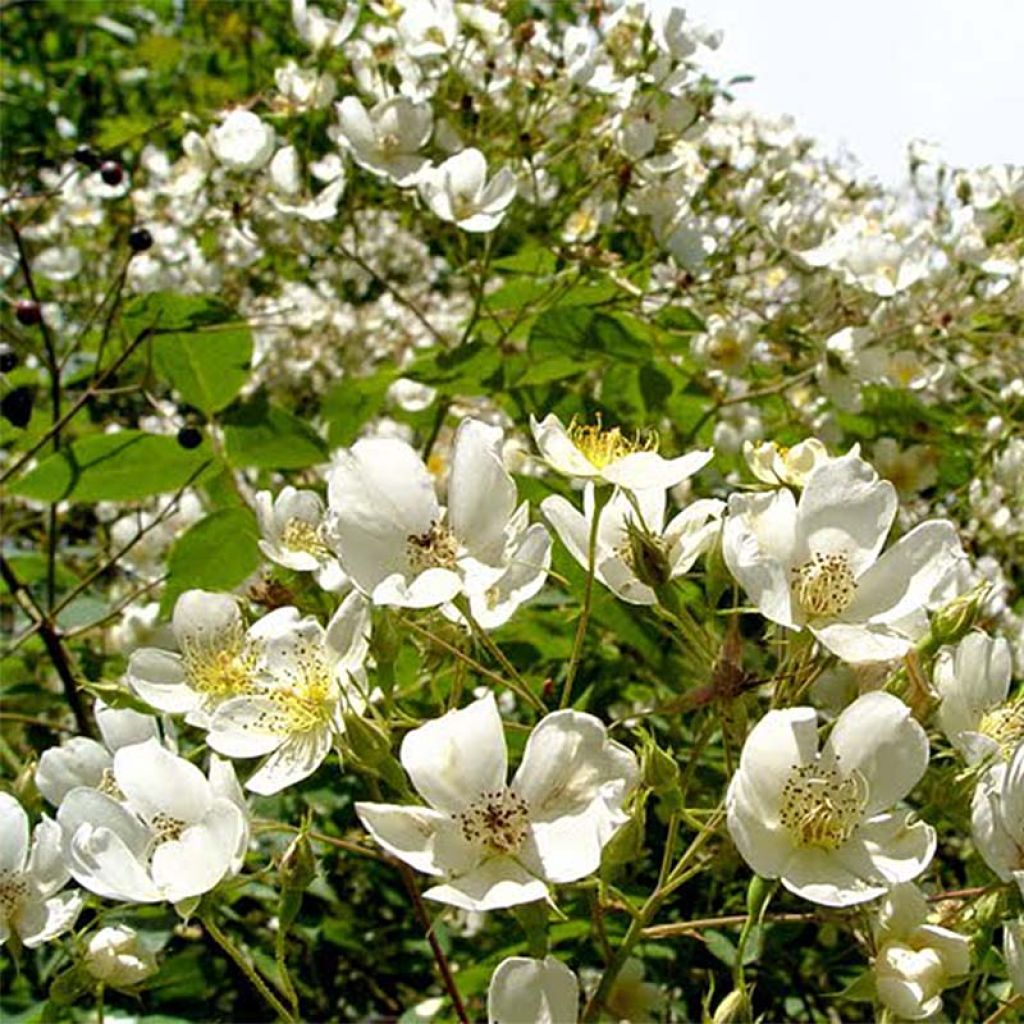

Rosa filipes 'Kiftsgate' - Rambling Rose
Rosa filipes 'Kiftsgate' - Rambling Rose
Rosa filipes Kiftsgate
Rambler Rose, Climbing Rose
This item cannot be shipped to the selected country
Delivery charge from €5.90
Delivery charge from €5.90
Delivery to Corse prohibited
More information
Schedule delivery date,
and select date in basket
This plant carries a 24 months recovery warranty
More information
We guarantee the quality of our plants for a full growing cycle, and will replace at our expense any plant that fails to recover under normal climatic and planting conditions.
From €5.90 for pickup delivery and €6.90 for home delivery
Express home delivery from €8.90.
From €5.90 for pickup delivery and €6.90 for home delivery
Express home delivery from €8.90.
Delivery to Corse prohibited: UE law prohibits the import of this plant from mainland France to Corse as part of the fight against Xylella fastidiosa. Please accept our sincere apologies.
More information
Does this plant fit my garden?
Set up your Plantfit profile →
Description
Rosa 'filipes Kiftsgate' is an exceptional climbing rose in every way. Directly descended from a wild rose, it sends out branches that disappear in the middle of summer under a cloud of tiny white and fragrant dog roses. Once the flowering is finished, it is adorned with clusters of red hips, very decorative, which persist for a long time on its branches. Far from being left behind, its shiny green foliage takes on a beautiful orange hue in autumn before falling. With the announcement of its fabulous qualities, this botanical type rose will tempt all gardeners, but it must be kept in mind that this endearing giant is also a true conqueror, for which it is essential to plan for space!
A gigantic rose that appeared in 1954, Kiftsgate is a sport of the botanical rose Rosa filipes, originating from the northwest of the Province of Sichuan, in western China, and first described in 1908. The Kiftsgate cultivar is distinguished by more pronounced vigour, longer flower clusters, and wider dog roses. This spreading rose with few thorns can produce shoots up to 10 to 12 metres (33 to 39 feet) long, depending on the growing conditions. It will reach 3 to 6 metres (10 to 20 feet) as an adult. It produces red, thread-like, smooth stems with curved thorns that bear juvenile foliage in ochre to copper, then become light green and shiny on the top over the days. In July, when most climbing roses have faded, its incredible flowering appears and lasts for several weeks in cool climates—grouped in 40 cm (16in) long clusters, over 100 pure white flowers, spotted with a bouquet of golden yellow stamens, with a very simple shape, entirely covering the vegetation. They measure about 7 cm (3in) in diameter and are highly fragrant. Each dog rose forms a small red hip, so this rose is overwhelmed at the end of the season with clusters of red pearls, accompanying its leaves that turn orange, then its bare branches in winter. These hips contain a large quantity of single-seeded achenes. The 'filipes Kiftsgate' is very resistant to diseases.
'Kiftsgate' is an enchanting, stunning, and candid rose, undemanding and with robust health. It will thrive in all areas but prefers sunny situations and shows more vigour in fertile soil. Like other ramblers (Paul's Himalayan Musk, Sander's White Rambler), it is incomparable for filling large spaces and giving a slightly abandoned, free and planted look above too-strict flowerbeds. It can also be used as ground cover; its exemplary foliage and abundant flowering allow it to do so. In this use, it will create an exceptional summer decoration. It is an ideal companion for trees that will revive uncertain fences and ugly buildings or sheds, to which it gives excellent charm. Trained on a large arch near the terrace, it will create a romantic and fragrant passage. As its flowering is late, it can be paired with a large-flowered clematis whose summer flowering will take over until autumn.
Report an error about the product description
Rosa filipes 'Kiftsgate' - Rambling Rose in pictures
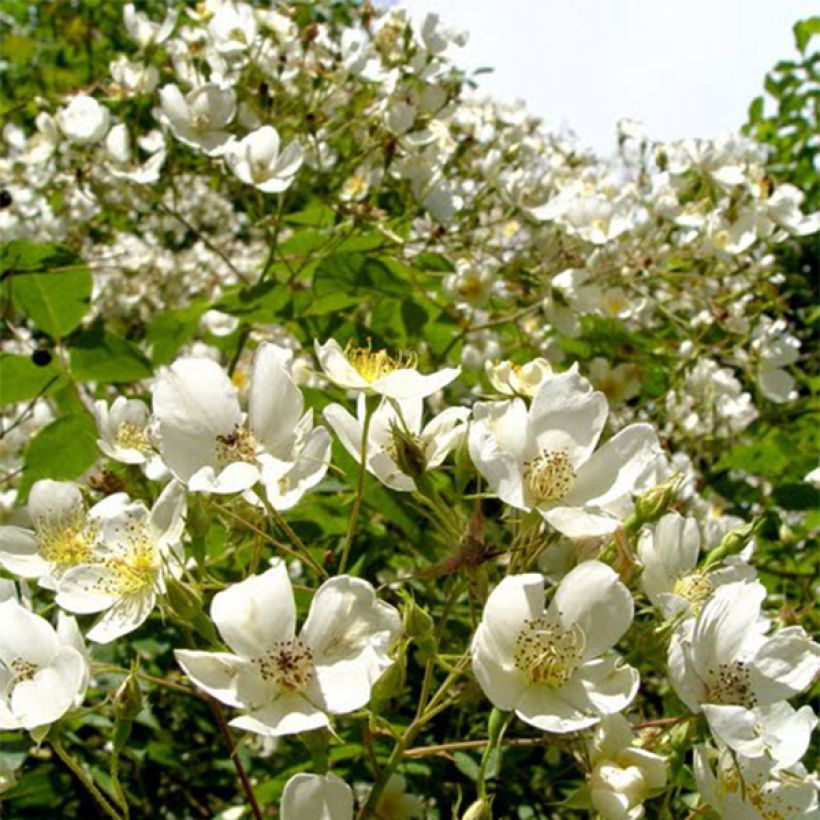

Plant habit
Flowering
Foliage
Botanical data
Rosa
filipes
Kiftsgate
Rosaceae
Rambler Rose, Climbing Rose
China
Rosa canina Laxa (4L/5L pot, Wrapped bare root)
Other Rambling Roses
Planting and care
The 'Kiftsgate' Rose is easy to grow in all kinds of soil as long as it gets enough water and nutrients. It's best to plant it in well-drained soil that's been prepared properly and in a sunny or semi-shaded spot. If you plant it in the shade of a tree, it may take longer to grow.
In autumn, you can plant the rose, but not during freezing temperatures. Reduce the stems that flowered the previous year to 3 or 4 buds or prune them to 15 cm (6 inches) to encourage growth. Remove old stems if necessary and train new ones. The most floriferous branches are 2 years old. The rose is fairly hardy and can survive temperatures as low as -20°C (-4°F). If the branches freeze to the ground after a harsh winter, the plant will regrow in the spring.
In winter, remove any dead wood and faded flowers if you don't want hips. In spring, after the risk of frost, you can do a light pruning if needed. You can allow rambling roses to grow freely if you have ample space.
If you plant a rambling rose next to a living tree, the rose's root system will compete with the tree's established root system. To control watering, you can plant the rose in a large container with a perforated bottom at the base of the tree. The tree roots won't enter the container for at least a year. After one year, remove the container without disturbing the rose's root system. The rose will have had enough time to develop its root system deeply and will be more resistant.
Roses may develop unsightly spots at the end of summer, but this is a natural occurrence and doesn't harm the rose's growth.
Planting period
Intended location
Care
-
, onOrder confirmed
Reply from on Promesse de fleurs
Traditional Roses
Haven't found what you were looking for?
Hardiness is the lowest winter temperature a plant can endure without suffering serious damage or even dying. However, hardiness is affected by location (a sheltered area, such as a patio), protection (winter cover) and soil type (hardiness is improved by well-drained soil).

Photo Sharing Terms & Conditions
In order to encourage gardeners to interact and share their experiences, Promesse de fleurs offers various media enabling content to be uploaded onto its Site - in particular via the ‘Photo sharing’ module.
The User agrees to refrain from:
- Posting any content that is illegal, prejudicial, insulting, racist, inciteful to hatred, revisionist, contrary to public decency, that infringes on privacy or on the privacy rights of third parties, in particular the publicity rights of persons and goods, intellectual property rights, or the right to privacy.
- Submitting content on behalf of a third party;
- Impersonate the identity of a third party and/or publish any personal information about a third party;
In general, the User undertakes to refrain from any unethical behaviour.
All Content (in particular text, comments, files, images, photos, videos, creative works, etc.), which may be subject to property or intellectual property rights, image or other private rights, shall remain the property of the User, subject to the limited rights granted by the terms of the licence granted by Promesse de fleurs as stated below. Users are at liberty to publish or not to publish such Content on the Site, notably via the ‘Photo Sharing’ facility, and accept that this Content shall be made public and freely accessible, notably on the Internet.
Users further acknowledge, undertake to have ,and guarantee that they hold all necessary rights and permissions to publish such material on the Site, in particular with regard to the legislation in force pertaining to any privacy, property, intellectual property, image, or contractual rights, or rights of any other nature. By publishing such Content on the Site, Users acknowledge accepting full liability as publishers of the Content within the meaning of the law, and grant Promesse de fleurs, free of charge, an inclusive, worldwide licence for the said Content for the entire duration of its publication, including all reproduction, representation, up/downloading, displaying, performing, transmission, and storage rights.
Users also grant permission for their name to be linked to the Content and accept that this link may not always be made available.
By engaging in posting material, Users consent to their Content becoming automatically accessible on the Internet, in particular on other sites and/or blogs and/or web pages of the Promesse de fleurs site, including in particular social pages and the Promesse de fleurs catalogue.
Users may secure the removal of entrusted content free of charge by issuing a simple request via our contact form.
The flowering period indicated on our website applies to countries and regions located in USDA zone 8 (France, the United Kingdom, Ireland, the Netherlands, etc.)
It will vary according to where you live:
- In zones 9 to 10 (Italy, Spain, Greece, etc.), flowering will occur about 2 to 4 weeks earlier.
- In zones 6 to 7 (Germany, Poland, Slovenia, and lower mountainous regions), flowering will be delayed by 2 to 3 weeks.
- In zone 5 (Central Europe, Scandinavia), blooming will be delayed by 3 to 5 weeks.
In temperate climates, pruning of spring-flowering shrubs (forsythia, spireas, etc.) should be done just after flowering.
Pruning of summer-flowering shrubs (Indian Lilac, Perovskia, etc.) can be done in winter or spring.
In cold regions as well as with frost-sensitive plants, avoid pruning too early when severe frosts may still occur.
The planting period indicated on our website applies to countries and regions located in USDA zone 8 (France, United Kingdom, Ireland, Netherlands).
It will vary according to where you live:
- In Mediterranean zones (Marseille, Madrid, Milan, etc.), autumn and winter are the best planting periods.
- In continental zones (Strasbourg, Munich, Vienna, etc.), delay planting by 2 to 3 weeks in spring and bring it forward by 2 to 4 weeks in autumn.
- In mountainous regions (the Alps, Pyrenees, Carpathians, etc.), it is best to plant in late spring (May-June) or late summer (August-September).
The harvesting period indicated on our website applies to countries and regions in USDA zone 8 (France, England, Ireland, the Netherlands).
In colder areas (Scandinavia, Poland, Austria...) fruit and vegetable harvests are likely to be delayed by 3-4 weeks.
In warmer areas (Italy, Spain, Greece, etc.), harvesting will probably take place earlier, depending on weather conditions.
The sowing periods indicated on our website apply to countries and regions within USDA Zone 8 (France, UK, Ireland, Netherlands).
In colder areas (Scandinavia, Poland, Austria...), delay any outdoor sowing by 3-4 weeks, or sow under glass.
In warmer climes (Italy, Spain, Greece, etc.), bring outdoor sowing forward by a few weeks.


































